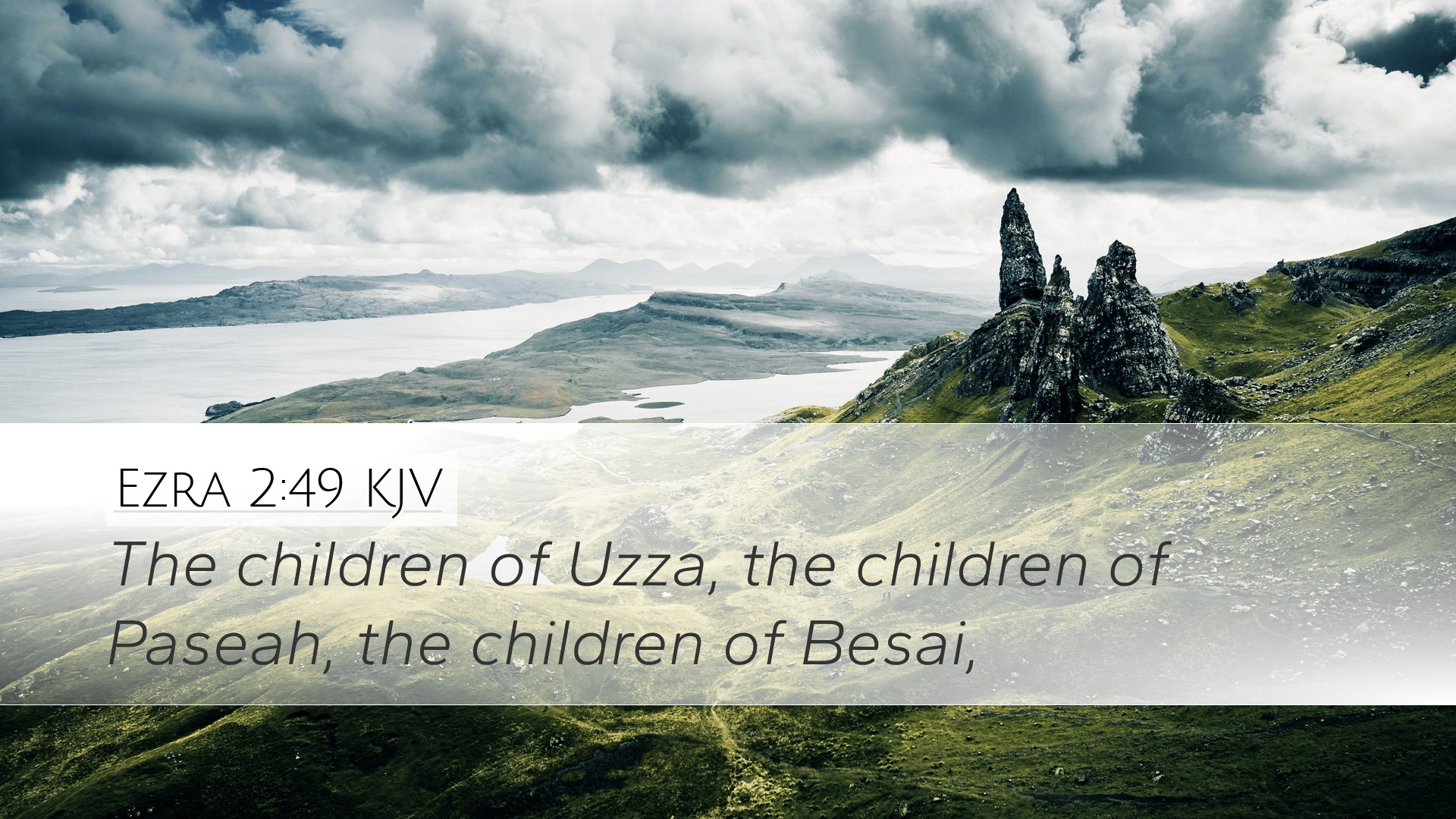Bible Commentary on Ezra 2:49
Ezra 2:49: “The children of Azmaveth, forty and two.”
Contextual Background
Ezra 2 is a pivotal chapter in the narrative of the post-exilic community of Israel. Following the Babylonian captivity, this chapter serves as a record of the returnees to Jerusalem. This journey back signifies not only a physical return but also a spiritual revival and re-establishment of worship in Jerusalem. Ezra’s account serves as a historical foundation for understanding the Jewish community's journey and their restoration.
Exegetical Insights
The phrase "the children of Azmaveth" refers specifically to a family line among the returnees, indicating the particular importance of familial ties in Jewish identity. Matthew Henry emphasizes the necessity of preserving genealogies, suggesting that the mention of such names serves to authenticate the narrative and connect the returning exiles to their ancestral heritage.
Albert Barnes further comments on the significance of the numbers recorded in this passage. He notes that the enumeration of those who returned speaks to God's faithfulness in preserving His people, highlighting the communal aspect of their return, which is more than a mere list of individuals; it illustrates a collective identity being restored.
Adam Clarke elaborates on the implications of "forty and two" as it pertains to community structure. This enumeration represents not just the families but also the roles they will assume within the community of faith. Each group mentioned in Ezra 2 has a specified task, be it worship, rebuilding, or administrative responsibilities, reflecting a divinely ordained order.
Theological Significance
Theologically, this verse demonstrates God’s covenant faithfulness. Even in the midst of exile, God preserved a remnant that would return to Jerusalem. Matthew Henry notes that God's grace is evident in the hardships faced by these returnees, while still providing a structured return that ensures His worship is reinstated in the holy city.
Furthermore, the meticulous nature of the record suggests God’s attention to detail in the lives of His people. Barnes and Clarke both highlight how this reflects on God's providence—no one is forgotten or overlooked in God's plan. Each family and individual carries a purpose that aligns with the larger narrative of redemption and restoration.
Applications for Spiritual Leaders
Pastoral application from Ezra 2:49 teaches the importance of acknowledging our roots and identities in Christ. For contemporary church leaders, understanding the significance of community and the roles each member plays can foster unity and collective worship.
- Community Restoration: Like the returnees, churches today must focus on restoring community ties that reflect God’s design for fellowship.
- Preserving Tradition: Just as the genealogies were vital for the identity of the Israelites, understanding the traditions and histories within church communities is equally important.
- Valuing Every Member: Each member has a role to play in the body of Christ, and recognizing their contributions fosters a sense of belonging and purpose.
Conclusion
Ezra 2:49 serves as a reminder of God's sovereignty and faithfulness throughout history. The detailed record of those who returned from exile symbolizes the importance of community, continuity, and the acknowledgment of every individual’s role within God's plan. This passage encourages modern-day believers to remember their heritage, embrace their identities, and strive towards a collective mission grounded in faith.


